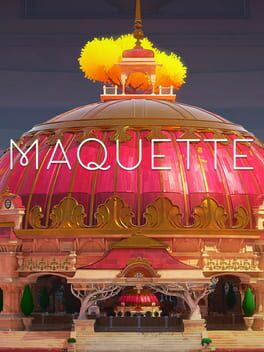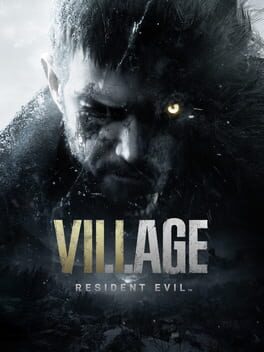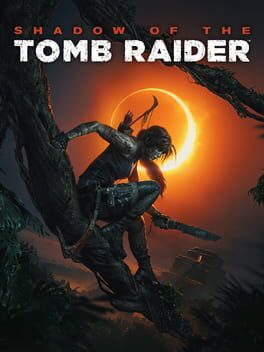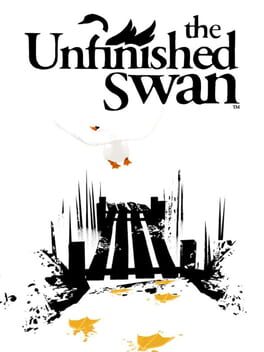MaraMaya
2023
2021
They fixed a few things, namely adding an FOV slider and some graphics options, but it's still buggy as hell with lots of frame drops.
It still has the same bland weapon design, ugly animations and models, nauseating effects, and they removed split-screen co-op.
If you already have Borderlands, this version is technically superior, but I wouldn't say this remaster is worth buying, and it doesn't help Borderlands hold a candle to its sequel.
It still has the same bland weapon design, ugly animations and models, nauseating effects, and they removed split-screen co-op.
If you already have Borderlands, this version is technically superior, but I wouldn't say this remaster is worth buying, and it doesn't help Borderlands hold a candle to its sequel.
2021
RE8 is an evolution of the RE7 formula, keeping what worked and drawing from older entries in the series to replace what didn't. There's a lot of RE4 in this game's DNA (almost like RE4 was subjected to some sort of mutagenic virus), and it works phenomenally when combined with a heavy atmosphere and tons of variety throughout.
As far as horror goes, RE has always been hit or miss. When it tries to be scary, it's usually held back by a ludicrous plot or tepid surroundings. With Village, however, it knows that something will scare you. For most, it ended up being one section in particular, but there's such a great variety here that something will likely connect with you.
As far as horror goes, RE has always been hit or miss. When it tries to be scary, it's usually held back by a ludicrous plot or tepid surroundings. With Village, however, it knows that something will scare you. For most, it ended up being one section in particular, but there's such a great variety here that something will likely connect with you.
2020
The most immersive gaming experience I've ever had. This game truly takes advantage of Virtual Reality with intuitive, manual controls and environmental puzzles, but is held back in its slow-at-times combat and lack of platforming many fans may expect. This doesn't mean the game is any poorer, but it certainly feels less like Half-Life if that's what you're looking for. Despite this, Half-Life continues its tradition of charging forward into uncharted waters.
This review contains spoilers
Shadow of the Tomb Raider is one of the most baffling redirections of a series I have played in a very long time. I played the first of the Tomb Raider reboots as well as Rise of the Tomb Raider near their original releases and I remember them as fun adventures with a satisfying if unrefined stealth system, a simplistic but entertaining set of puzzles, that were set to breathtaking visuals for their time. Shadow, on the other hand, feels simultaneously like more of the same as well as a step in the wrong direction.
Rise leaned more heavily on the open world free-roam sections and, while I didn't appreciate this as much as the more linear experience of the first title, I could look past it because of its improved upgrade system. I was cautiously optimistic for Shadow, but it seems they have sunk further into the collect-a-thon style of game, coupled with some really anti-fun design choices. Why do I still need to decipher these languages in order to just read the monoliths? We see multiple times in the story that Lara has a perfectly good camera that can capture ancient writings for later study, I can't just take a picture of the monoliths and look at them later? Collecting resources is not fun when it only involves walking up to the obvious environmental object and pressing the interact key. Platforming puzzles are not engaging when a tutorial message is shown on the screen every second showing exactly what to do. Bear in mind, this is on the default difficulty setting. If there was an easy mode where these systems were more stripped down, I wouldn't mind, but I'd like for the default setting to at least give me some amount of immersion.
The stealth system has not evolved with its introduction of hiding on walls. It's a niche interaction at best, only useful in situations where extreme stealth is arbitrarily enforced. In the majority of encounters, using weapons is the way to go, even on hard. The game hands you a silenced pistol very near the beginning of the game, and still expects you to use the bow, which has the same killing potential on headshot but a much slower fire rate. Why bother carefully using distractions and sneaking to isolate enemies and move in for the kill when I can pick all of them off from 300 meters away with impunity? I suppose this is where intrinsic versus extrinsic motivation comes into play, but in the third entry in the series with the same game mechanics, intrinsic value has been lost.
As far as the puzzles go, they vary between completely braindead and frustratingly arcane. I enjoyed the puzzle with the white crown in Lara's house, but the game expects you to reference your collected files for clues needed to solve the puzzle, but never tells you how to access these or that they even exist. I played with the puzzles set to hard for more challenge, but even on other difficulties the game does not tell you how to or that you even can reference your notes. The puzzle with the combination locks for the doors was another example of this, where I'm not even sure what I was supposed to glean from the note it told me to look at. I suppose this is my fault, but the game really doesn't attempt to make its challenges solvable, but instead just wants to waste your time until you randomly press the right button. That's the difference between a good puzzle and...well...most of the puzzles in The Witness.
I've seen a lot of praise of the visuals in this game and I have to disagree. Yes, there are some parts where the game is gorgeous, but these are few and far between in my experience. Playing on the highest settings with ray-tracing, the game has some of the worst lighting and art direction I have seen from a title of this budget in recent memory. The color grade is downright terrible, what should be the most vibrant and colorful game in the series feels muted and bland, like a Gears of War imitation. The shadows don't feel shadowy, and the highlights feel swampy. When the game does get vibrant, it's in caves, but then the atmospheric effects drown the entire scene in a dense orange glow, completely destroying the color palette. A lot of these issues can be fixed with something like Reshade, but what can't be fixed is the boring use of lighting in the open world areas. There is no style to it, no creative use of lighting to highlight certain parts of the environment. Yes these techniques are used, but they only appear in the linear sections of the game where you spend far less of your time. At least the performance is good.
The story is exactly what you'd expect. Nothing ventured, nothing gained, and certainly nothing has been gained in this iteration of the same old formula. Lara is on another adventure and crashes another plane (you'd think they wouldn't let her near one of those things by now), and calamity ensues. This entry does have an interesting premise that Lara causes the apocalypse, but all this does is make me want to shut down the game and let Trinity win. The story can't decide whether Lara should be a concerned archaeologist with a passion for history or a laissez-faire crusader with no self-awareness. There were several times in the story that Lara, someone who has massacred thousands of Trinity soldiers at this point and is currently armed to the teeth with high-tech automatic weapons, has been face-to-face with the villain of the story who is armed with checks notes, sticks and rocks, and chooses to do nothing. Ludonarrative dissonance is nothing new to the New Raider series but you'd think the writers would have learned their lesson by now. I guess war really does never change.
The new skill tree is largely pointless, the outfit system having stats attached is not only pay-to-win with the deluxe versions, but also defeats a lot of the intrinsic value of a character customization system. The underwater stealth sections are also a prime-example of anti-fun gameplay with next to zero depth.
Rise leaned more heavily on the open world free-roam sections and, while I didn't appreciate this as much as the more linear experience of the first title, I could look past it because of its improved upgrade system. I was cautiously optimistic for Shadow, but it seems they have sunk further into the collect-a-thon style of game, coupled with some really anti-fun design choices. Why do I still need to decipher these languages in order to just read the monoliths? We see multiple times in the story that Lara has a perfectly good camera that can capture ancient writings for later study, I can't just take a picture of the monoliths and look at them later? Collecting resources is not fun when it only involves walking up to the obvious environmental object and pressing the interact key. Platforming puzzles are not engaging when a tutorial message is shown on the screen every second showing exactly what to do. Bear in mind, this is on the default difficulty setting. If there was an easy mode where these systems were more stripped down, I wouldn't mind, but I'd like for the default setting to at least give me some amount of immersion.
The stealth system has not evolved with its introduction of hiding on walls. It's a niche interaction at best, only useful in situations where extreme stealth is arbitrarily enforced. In the majority of encounters, using weapons is the way to go, even on hard. The game hands you a silenced pistol very near the beginning of the game, and still expects you to use the bow, which has the same killing potential on headshot but a much slower fire rate. Why bother carefully using distractions and sneaking to isolate enemies and move in for the kill when I can pick all of them off from 300 meters away with impunity? I suppose this is where intrinsic versus extrinsic motivation comes into play, but in the third entry in the series with the same game mechanics, intrinsic value has been lost.
As far as the puzzles go, they vary between completely braindead and frustratingly arcane. I enjoyed the puzzle with the white crown in Lara's house, but the game expects you to reference your collected files for clues needed to solve the puzzle, but never tells you how to access these or that they even exist. I played with the puzzles set to hard for more challenge, but even on other difficulties the game does not tell you how to or that you even can reference your notes. The puzzle with the combination locks for the doors was another example of this, where I'm not even sure what I was supposed to glean from the note it told me to look at. I suppose this is my fault, but the game really doesn't attempt to make its challenges solvable, but instead just wants to waste your time until you randomly press the right button. That's the difference between a good puzzle and...well...most of the puzzles in The Witness.
I've seen a lot of praise of the visuals in this game and I have to disagree. Yes, there are some parts where the game is gorgeous, but these are few and far between in my experience. Playing on the highest settings with ray-tracing, the game has some of the worst lighting and art direction I have seen from a title of this budget in recent memory. The color grade is downright terrible, what should be the most vibrant and colorful game in the series feels muted and bland, like a Gears of War imitation. The shadows don't feel shadowy, and the highlights feel swampy. When the game does get vibrant, it's in caves, but then the atmospheric effects drown the entire scene in a dense orange glow, completely destroying the color palette. A lot of these issues can be fixed with something like Reshade, but what can't be fixed is the boring use of lighting in the open world areas. There is no style to it, no creative use of lighting to highlight certain parts of the environment. Yes these techniques are used, but they only appear in the linear sections of the game where you spend far less of your time. At least the performance is good.
The story is exactly what you'd expect. Nothing ventured, nothing gained, and certainly nothing has been gained in this iteration of the same old formula. Lara is on another adventure and crashes another plane (you'd think they wouldn't let her near one of those things by now), and calamity ensues. This entry does have an interesting premise that Lara causes the apocalypse, but all this does is make me want to shut down the game and let Trinity win. The story can't decide whether Lara should be a concerned archaeologist with a passion for history or a laissez-faire crusader with no self-awareness. There were several times in the story that Lara, someone who has massacred thousands of Trinity soldiers at this point and is currently armed to the teeth with high-tech automatic weapons, has been face-to-face with the villain of the story who is armed with checks notes, sticks and rocks, and chooses to do nothing. Ludonarrative dissonance is nothing new to the New Raider series but you'd think the writers would have learned their lesson by now. I guess war really does never change.
The new skill tree is largely pointless, the outfit system having stats attached is not only pay-to-win with the deluxe versions, but also defeats a lot of the intrinsic value of a character customization system. The underwater stealth sections are also a prime-example of anti-fun gameplay with next to zero depth.
2012
This game feels unfinished. I don't mind games being on the shoter side, but this game is full of ideas that lack growth and development. It's only four levels long, and its mechanics peak at the second level in terms of creativity. If you find it on sale, it's a well-made experience with some cute storytelling, but don't go into this expecting a challenge.
2022
Stray has such a simple concept at its core but it is executed near-perfectly. It's not exactly a challenge, but the world, and the way you move through it, is truly unique. Stray does a lot with very little in terms of its storytelling, but it has a fantastic visual presentation to complement it. Truly one of the most unique, heartfelt, and memorable games to come out in the last generation.
Now on to some negatives: Some of the puzzle design really lacked clarity, such as the part where you need to steal clothes to sneak in somewhere. While the world is very detailed, it's also busy, and it can be difficult to tell where you can go, especially on a smaller screen. The detection system on the sentinels seems undercooked and could use some tuning, but I doubt something like that would get patched this long after release.
Now on to some negatives: Some of the puzzle design really lacked clarity, such as the part where you need to steal clothes to sneak in somewhere. While the world is very detailed, it's also busy, and it can be difficult to tell where you can go, especially on a smaller screen. The detection system on the sentinels seems undercooked and could use some tuning, but I doubt something like that would get patched this long after release.
2021
Doesn't do enough to differentiate itself from its predecessor, leaving a lot of the joy of discovery found there to fall flat in this installment. What is here can be compelling, but only through the context of the first title. With many issues still lingering, it's hard to say this is the definitive version of this version of Hyrule.











